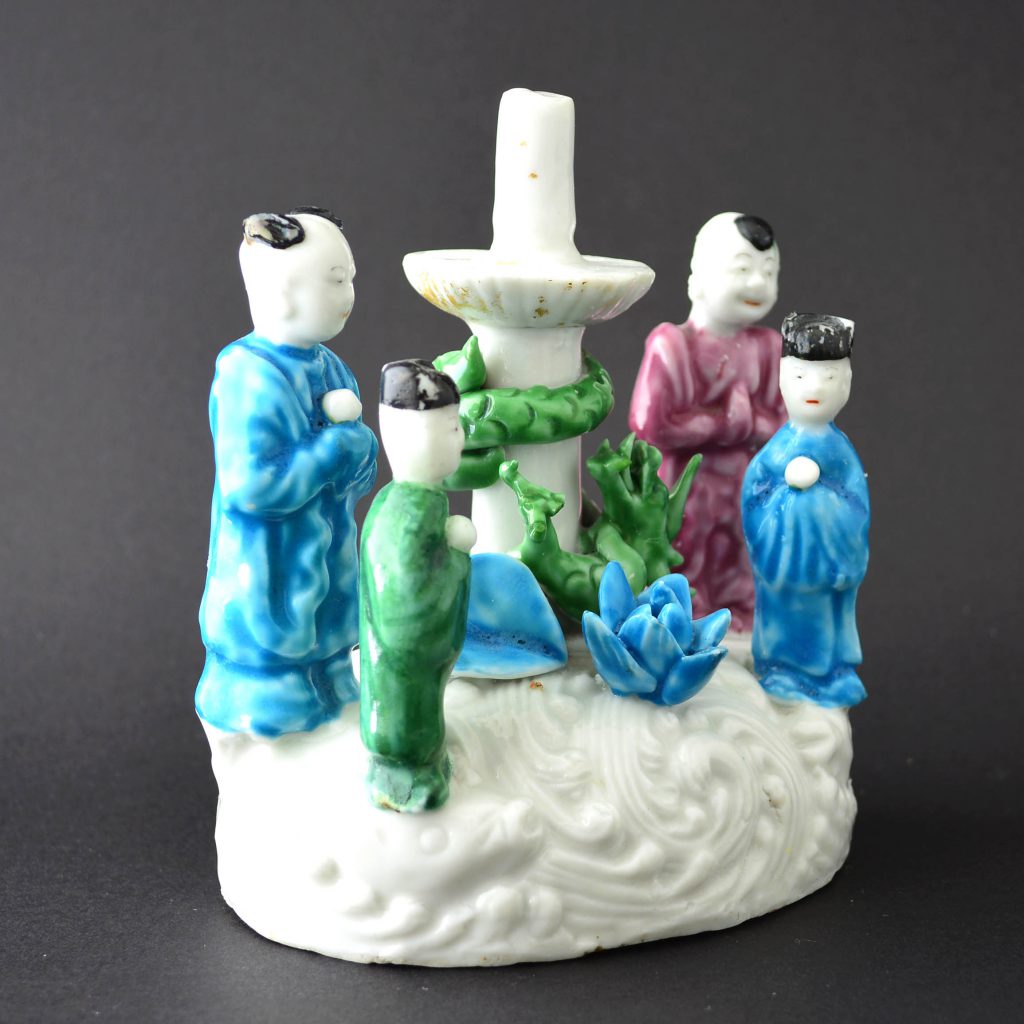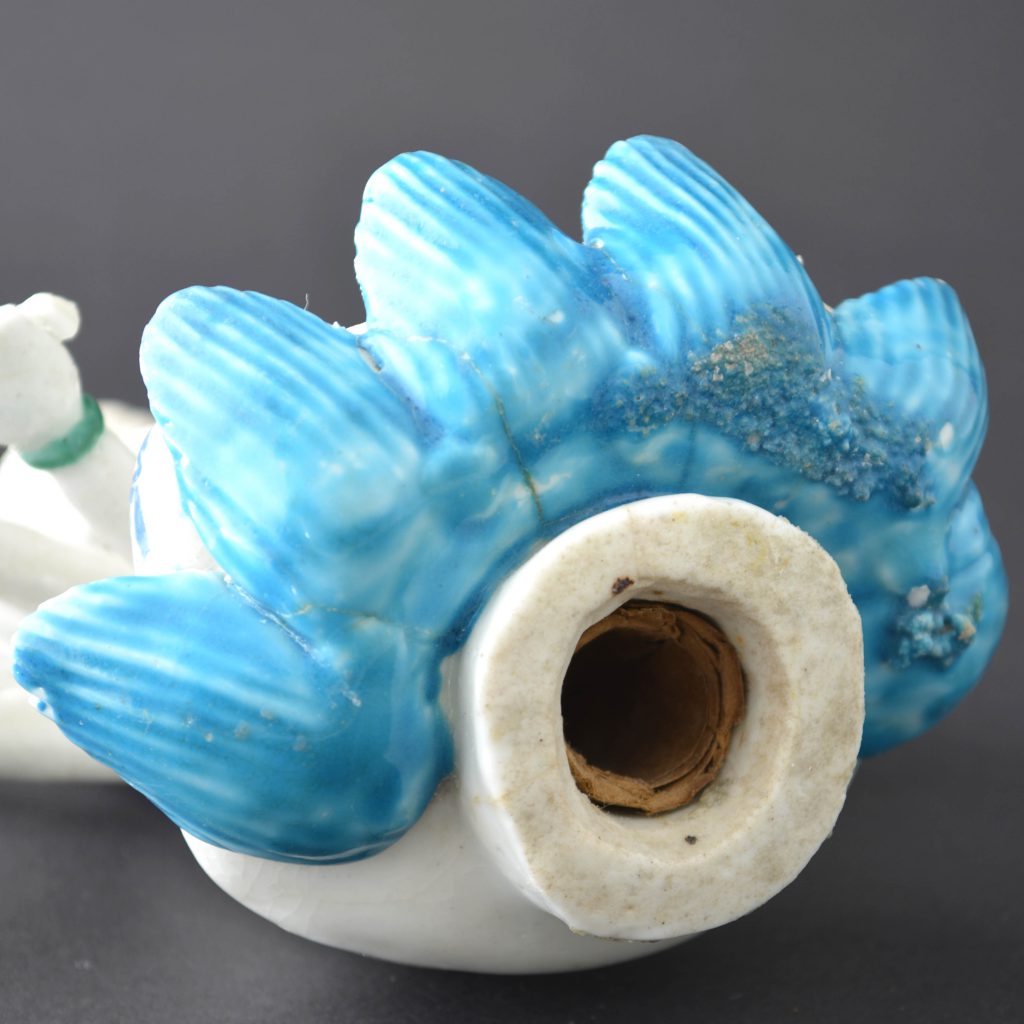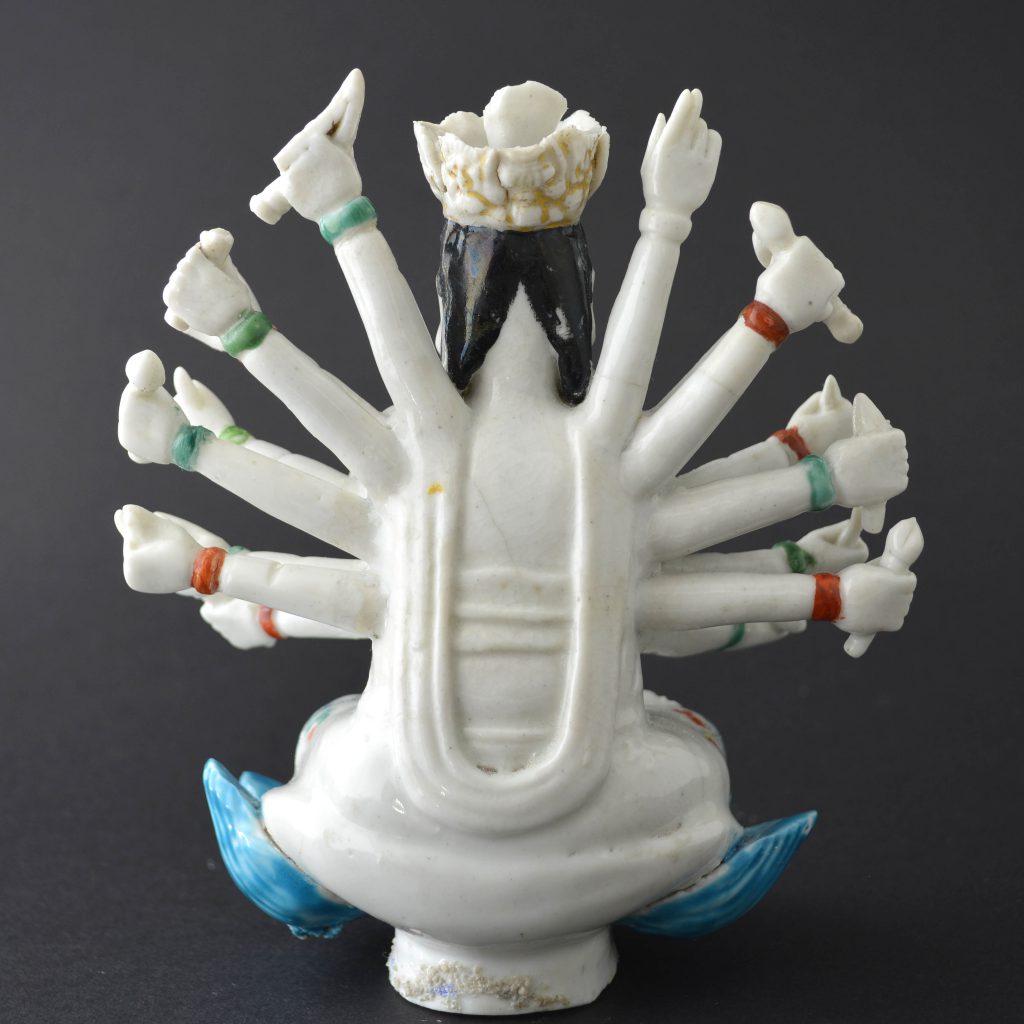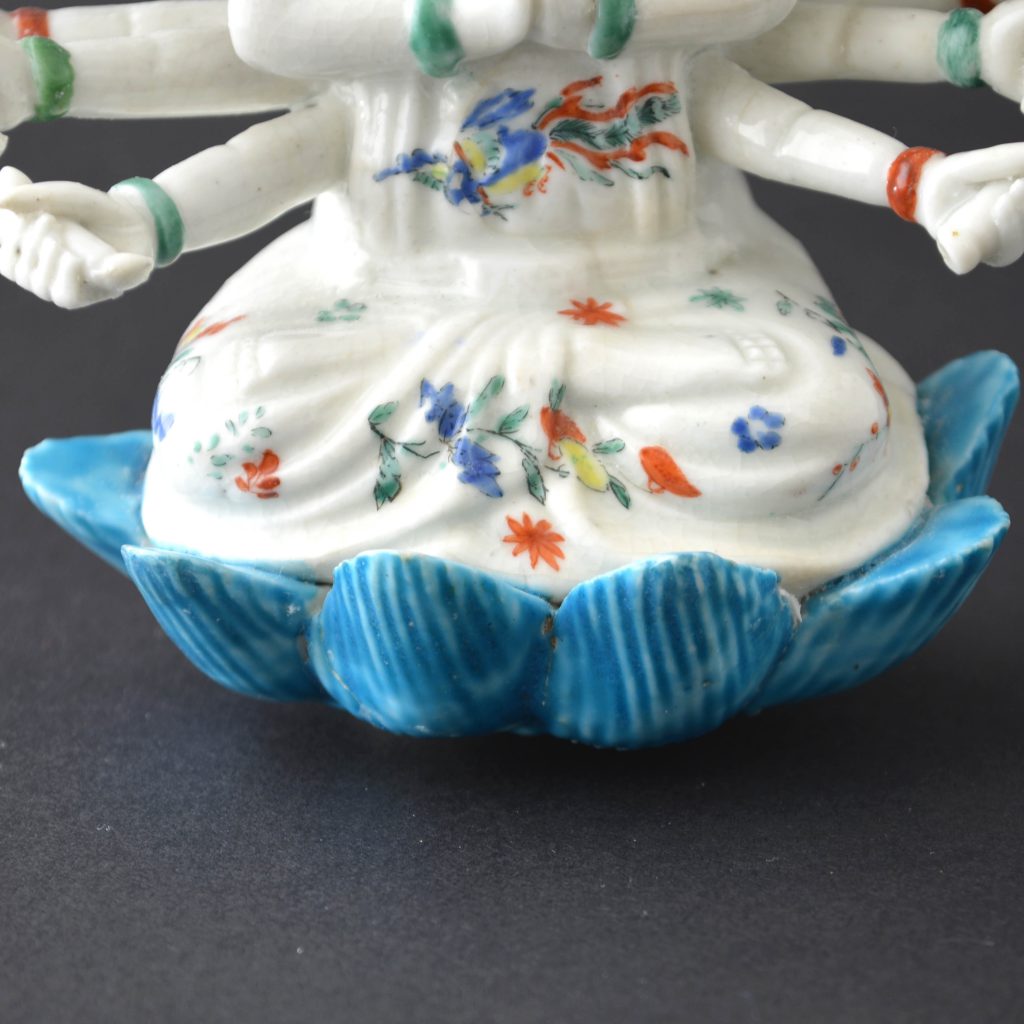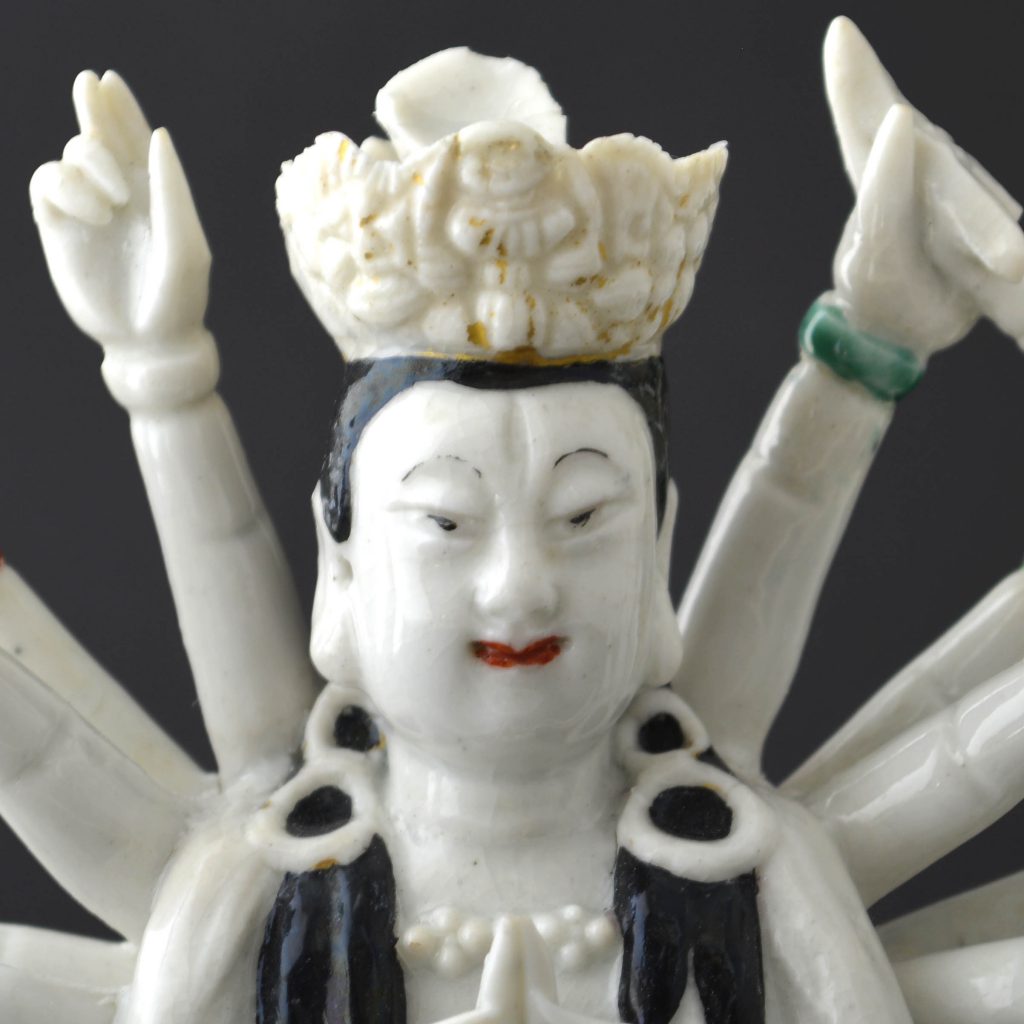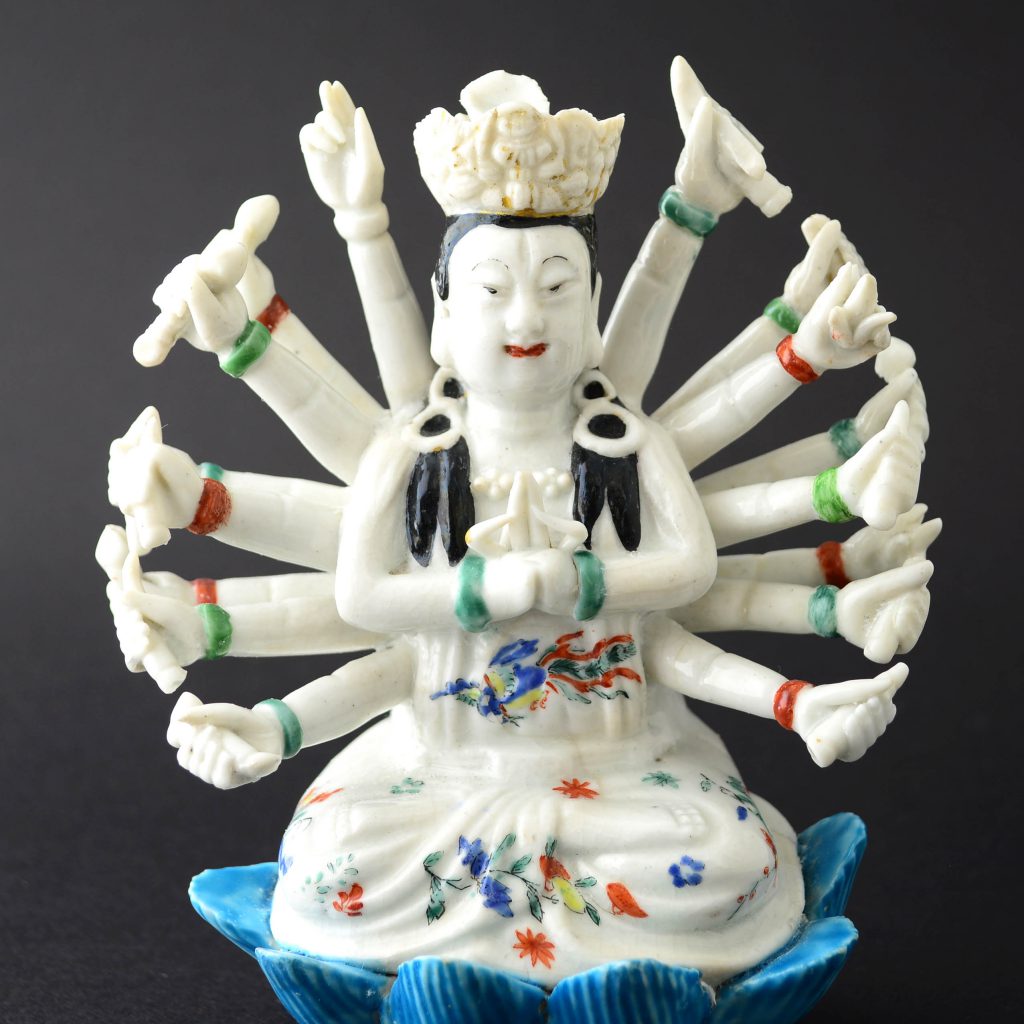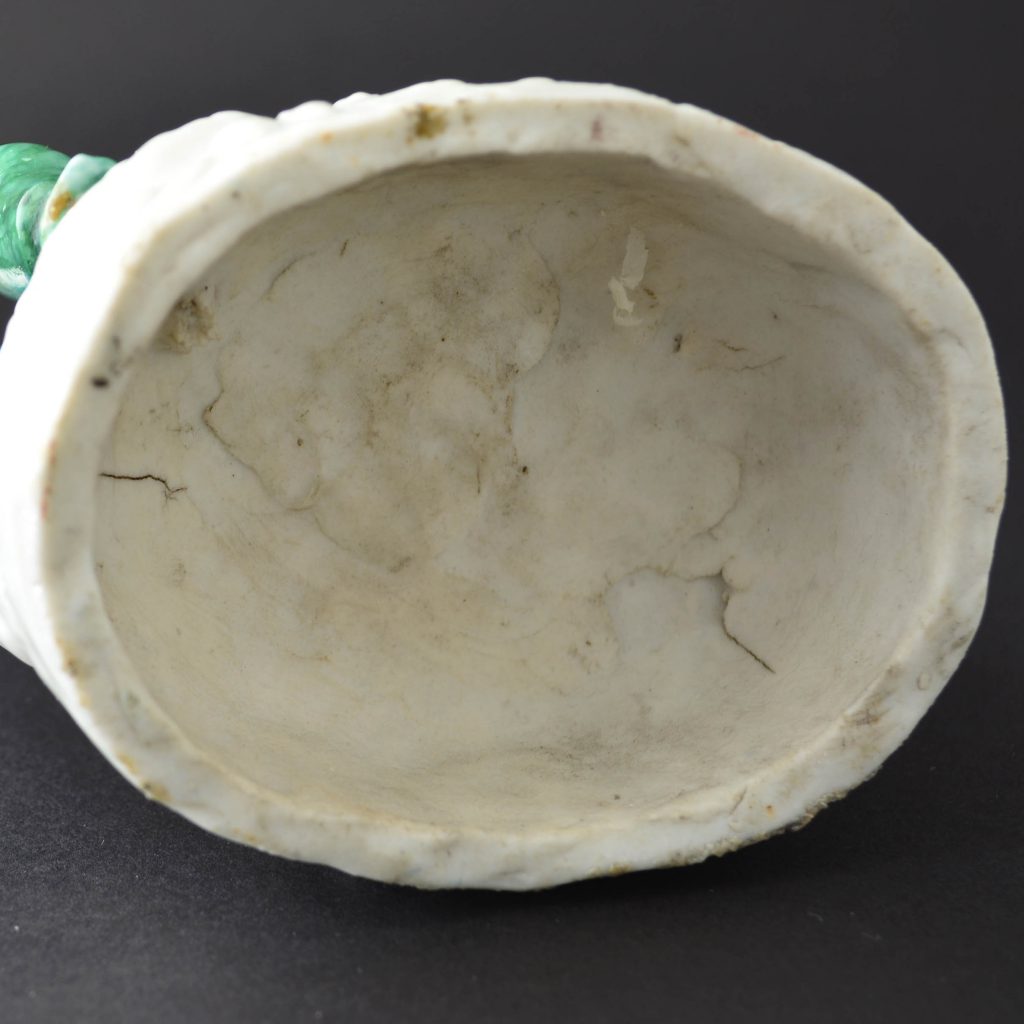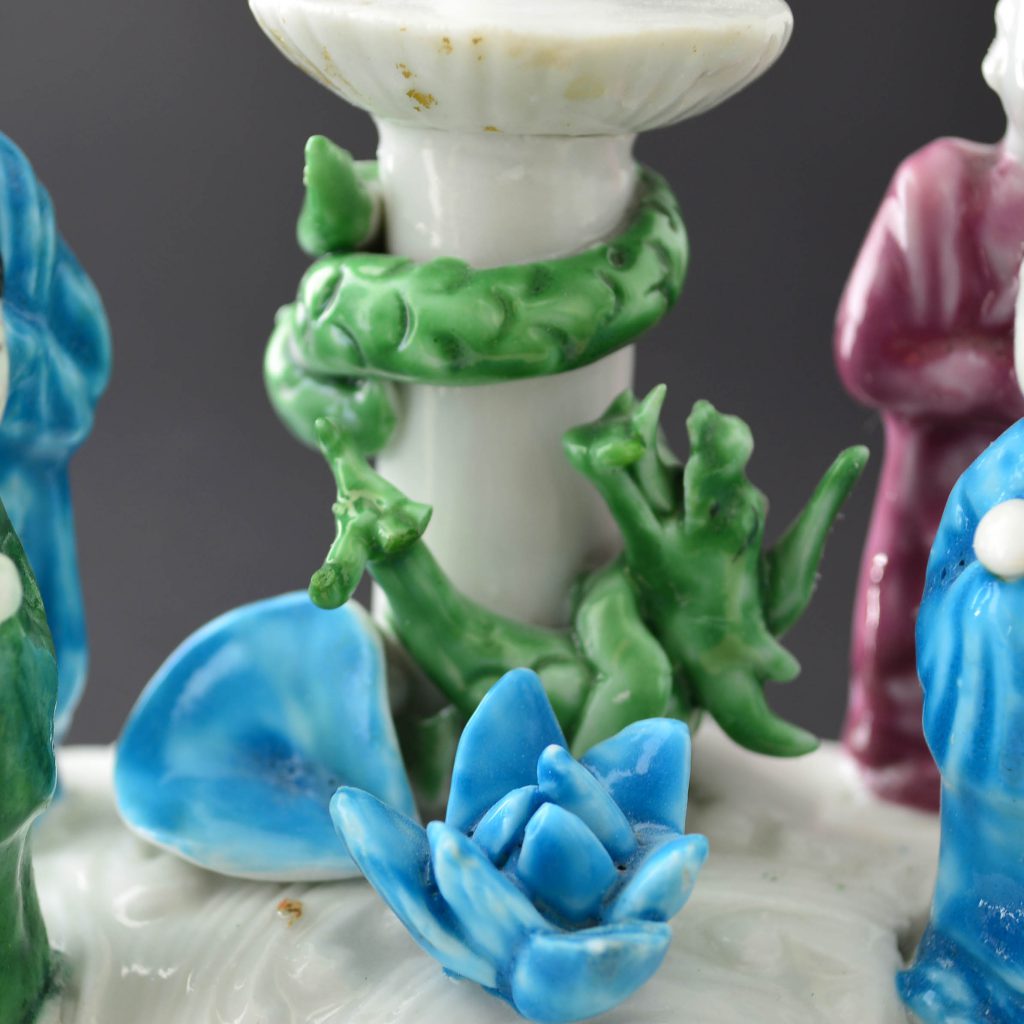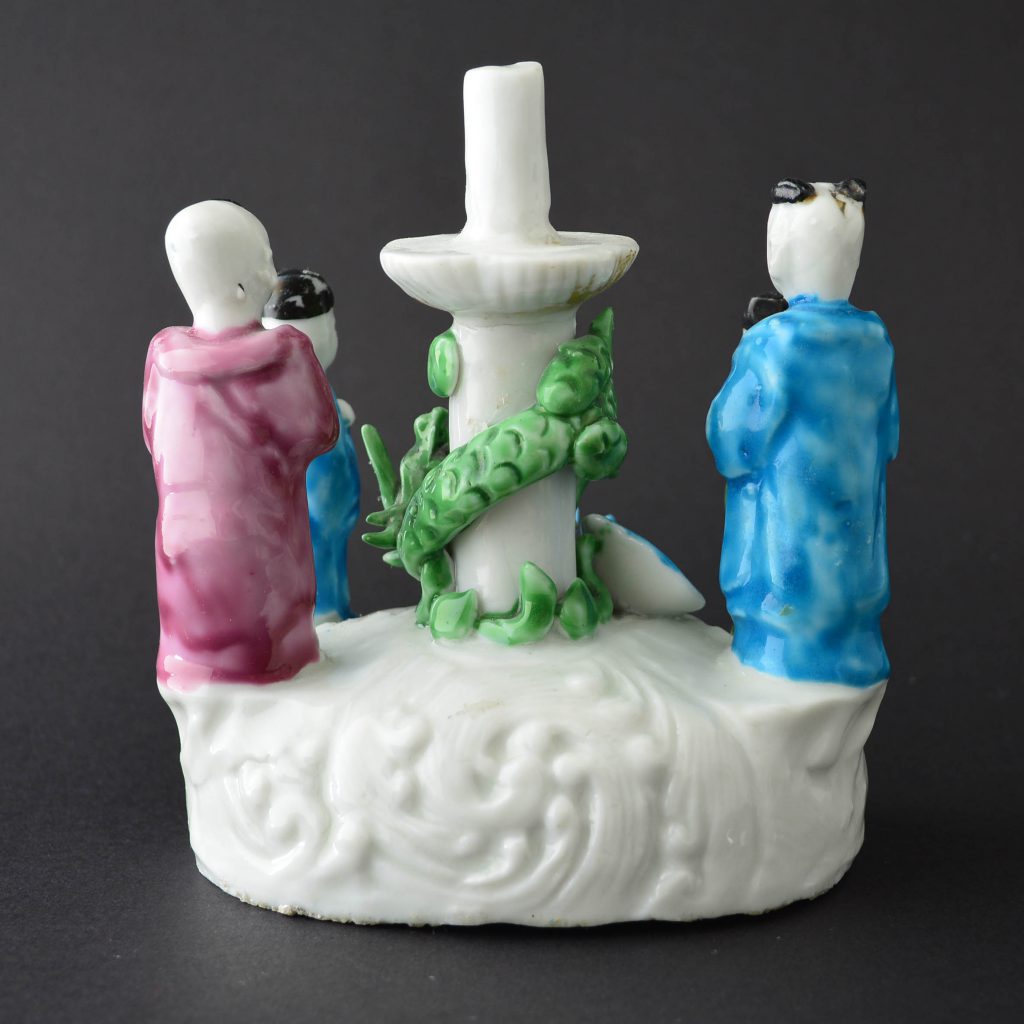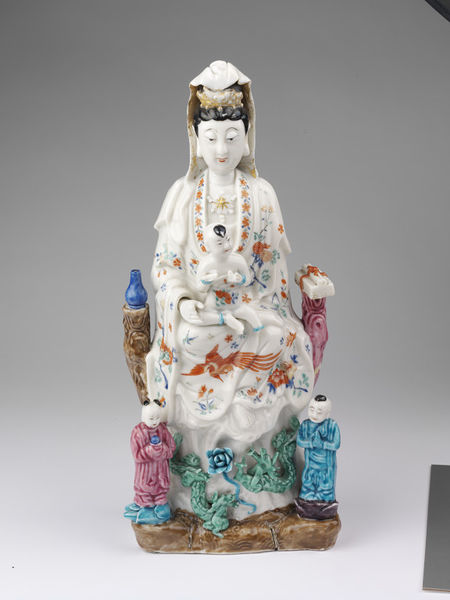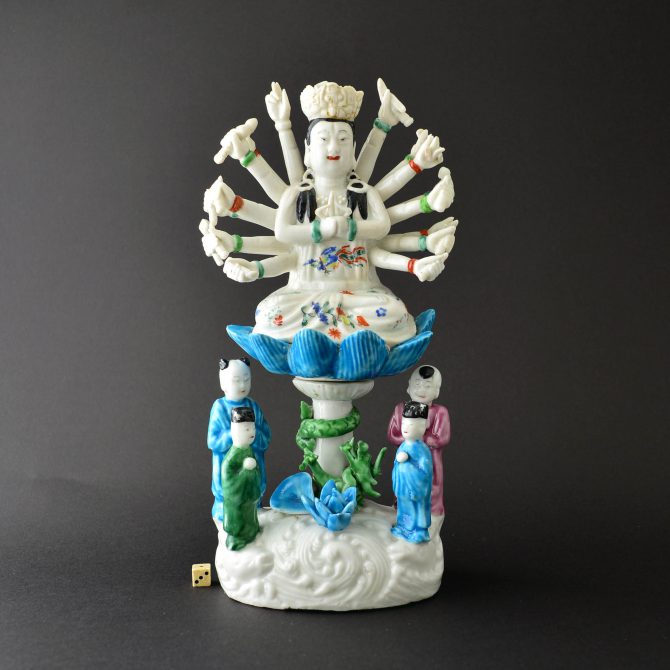
A Very Rare London Decorated Kangxi Blanc de Chine Model of Doumu Yuanjun.
An extremely rare, perhaps unique, London decorated Kangxi Blanc de Chine porcelain model of Doumu Yuanjun. The Blanc de Chine porcelain from Dehua in Fujian province was made in c.1690-1720, the London decoration c.1745-1750. The two piece model shows the multi-armed goddess on her lotus throne with a dragon curled around the column that supports her. The base is moulded in the form of crashing waves. The London decoration has very distinct large areas of a vivid translucent turquoise, deep green and a puce enamels. The delicate enamelled decoration of the goddess is in the Kakiemon style and depicts a Ho-Ho bird. Her crown is gilded but rather worn.
SOLD
- Condition
- This extremely vulnerable figure has been damaged and repaired. The green acolyte has been restored (only a very tiny part of the base was left). Two arms have been replaced and two other arms and one hand have been replace. A chip to her crown.
- Size
- Height : 24.5 cm (9 1/2 inches).
- Provenance
- The Bernard Watney Collection of English and Dutch decorated Chinese porcelain. Christie's South Kensington, 18th July 2012, lot 619. The Helen Espir Collection of European Decorated Oriental Porcelain number 957.
- Stock number
- 24578
Information
Doumu Yuanjun :
'Mother of the Great Chariot' also known as Doumu Yuanjun 'Primordial Mother Goddess of the Chariot' is a goddess in Chinese religion and Taoism . She is also named through the honorific Tianhou or 'Queen of Heaven'.
She represents the Big dipper (or Great Chariot, or Plough), and is therefore considered the mother of its seven stars and two not visible ones, the Jiuhuangdadi or Nine Great Emperor Gods. The Big Dipper is in Chinese culture, as well as in other cultures of the world, a traditional symbol of the absolute principle originating the universe (Taidi, Tian or the Tao in Chinese thought). Therefore, Doumu is the 'solar' or heaven goddess; she is indeed seen as the female consort of Shangdi also named Doufu 'Father of the Great Chariot', or Yuanshi Tianzun 'Heavenly Lord of the Primordial Beginning' or Taiyi Tianzun 'Heavenly Lord of the Great Oneness' in Taoism.
Kakiemon Porcelain :
Kakiemon decoration is usually of high quality, often delicate and with well-balanced asymmetric designs. The designs were normally quite sparse emphasizing the fine white porcelain body known in Japan as Nigoshide (milky white). The opaque white milky Nigoshide body was used on the finest pieces, it appears that it was reserved for fine quality enamelled decoration. Kakiemon porcelain was decorated with a great variety of imaginative designs which include elements such as the `banded hedge`, `flying squirrel`, and the `Quail and Millet` design. The `Three Friends of Winter` were also a very popular group of designs, other subject taken from nature include flowers (especially the chrysanthemum, the national flower of Japan) as well as birds and rock-work. Figural subjects such as the `Hob in the Well` were also popular. This design illustrates a Chinese folk tale where a sage saves his friend who has fallen into a large fish-bowl by throwing stones at it, braking open the pot. Banded-Hedges were a formal device within Japanese traditional gardens, they were often incorporated in designs, includes `The Three Friends of Winter` (Pine, Bamboo and Prunus). These three plants signify perseverance, as neither the pine nor the bamboo shed their leaves in winter and the plumb (Prunus) flowers at the very end of the winter, heralding the arrival of spring.
Hō-ō Bird / Ho-Ho Bird :
The Japanese Ho-o bird is type of auspicious phoenix and is similar to the Chinese Fenghuang. the Hō-ō appears only in peaceful and prosperous times (nesting, it is said, in paulownia trees), and hides itself when there is trouble. As the herald of a new age, the Hō-ō descends from heaven to earth to do good deeds, and then it returns to its celestial abode to await a new era. It is both a symbol of peace (when the bird appears) and a symbol of disharmony (when the bird disappears). The Ho-o Bird appears frequently in Japanese porcelain of the late 17th and early 18th centuries, especially in Kakiemon wares. Ho-Ho is often used when referring to English porcelain versions of these Kakiemon designs.
A Model of Guanyin in the Victoria and Albert Museum, London.
Museum number C.58-2004, Gallery location World Ceramics, room 145, case 21, shelf 3
This figure of Guanyin was clearly decorated in the same studio as the present example.
Glazed hard-paste porcelain figure of The Bodhisattva Guanyin in her aspect as the 'bringer of sons'. The goddess is seated with her infant son on her right knee; she is barefoot and wears loosely fitting gown and necklace, veil and tiara; she sits on a rocky pedestal upon which there are two dragons and a lotus plant rendered in relief, and from which two truncated tree branches emerge, upon which rest her traditional attributes of a vase (of holy dew or ambrosia, on her right), and a bundle of books (on her left); to either side of the pedestal stand diminutive figures of acolytes, on her right a young woman holding a cup (?), and on her left a youth with hands clasped in prayer. The figure's robe has been painted in enamels in a Japanese Kakiemon palette with a version of the 'Red Dragon' pattern and with chrysanthemum sprays, peonies and scattered flowers, some details having been enhanced with gilding, and the veil is also gilt (much rubbed); the base (front face only), truncated branches, dragons, acolytes and attributes are painted with broad washes of turquoise, green, crimson, brown and blue enamel.
The figure and base were made in a mould, but have much additional modelling and hand-finishing; painted in England with enamels and gold; broken in the 18th or 19th centuries and repaired with two staples.
